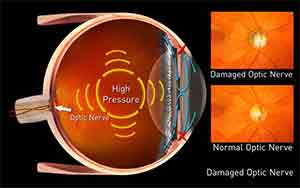Glaucoma drug reduces risk of vision loss by more than 50% over 2 years
 Prostaglandin analogue eye drops, the most commonly prescribed treatment for glaucoma, can greatly reduce risk of vision loss in people with open angle glaucoma (OAG), one of the leading causes of blindness, according to the first placebo-controlled trial to assess their vision-preserving effect published in The Lancet.
Prostaglandin analogue eye drops, the most commonly prescribed treatment for glaucoma, can greatly reduce risk of vision loss in people with open angle glaucoma (OAG), one of the leading causes of blindness, according to the first placebo-controlled trial to assess their vision-preserving effect published in The Lancet.
“Medication to lower raised eye pressure has been used for decades as the main treatment for OAG to delay progressive vision loss. But, until now, the extent to which the most frequently prescribed class of pressure-lowering drugs (prostaglandin analogues) have a protective effect on vision was not known”, explains David Garway-Heath, lead author and International Glaucoma Association Professor of Ophthalmology at the NIHR Biomedical Research Centre at Moorfields Eye Hospital and UCL Institute of Ophthalmology, London, UK.
“Our findings offer solid proof to patients and practitioners that the visual deterioration caused by glaucoma can be reduced using this treatment.”*
OAG is the most common form of glaucoma affecting more than 550000 people in England and Wales and about 45 million worldwide, projected to increase to 53 million in 2020 and 80 million in 2040 [1]. Vision loss from glaucoma occurs when the optic nerve is damaged. In most cases, increased pressure inside the eye (intraocular pressure), is thought to contribute to this damage.
The United Kingdom Glaucoma Treatment Study (UKGTS) recruited 516 newly diagnosed, previously untreated individuals with OAG from 10 hospitals across the UK.
Half were randomly assigned to daily pressure-lowering eye drops (latanoprost 0.005%) and the other half to a matching placebo. Over the course of 2 years, participants underwent frequent visual field tests to identify glaucoma deterioration to an extent that would not be noticed by the patient.
In the 59 patients in the placebo group and 35 patients in the latanoprost group whose vision deteriorated during the study period, the risk of visual deterioration was over 50% lower in the group treated with daily pressure-lowering eye drops compared to those using placebo drops over 2 years. Importantly, a significant difference in treatment effects could be seen between the groups after just 12 months. Eighteen serious adverse events were reported (9 in the placebo group and 9 in the latanoprost group) but none were viewed as related to latanoprost.
According to Professor Garway-Heath, “Normally, observation periods in trials are at least 5 years. We have shown that with more frequent testing, data can be collected using shorter observation periods. This will bring considerable benefits including speeding up novel drug development, reducing costs, and increasing the likelihood of bringing new drugs to patients.”*
Writing in a linked Comment, Dr Anders Heijl from Lund University, Malmö, Sweden, points out, “Since modern glaucoma treatment is based on reduction of intraocular pressure, and because glaucoma management uses about 25% of all ophthalmology resources, this is a fundamental issue in ophthalmic care…These results should motivate careful clinical follow-up and monitoring of disease progression in patients with glaucoma, and should also serve as a stimulus to the pharmaceutical industry to continue development of new and even more potent drugs.”
Source: The Lancet

